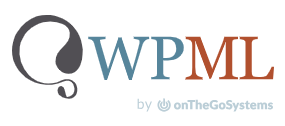I thought about whether blogging the same content in multiple languages would help with global marketing, and it seems that multilingual blogging has many advantages beyond just writing in different languages.
Advantages of Multilingual Blogs in Global Marketing
1. Improved Search Engine Optimization (SEO)
Multilingual content increases the likelihood of being searched in specific language markets. This way, you can expect more traffic from various countries.
For example, if you run a blog in English and Korean, having optimized content in each language increases the chances of being found by users from both language groups.
2. Broader User Base
By providing content in various languages rather than just English, more people will be able to understand and access it easily.
For instance, a Japanese user might read a blog in Japanese and want to share it with friends, which can naturally bring a wider audience to our blog.
3. Increased Trustworthiness
Content provided in the local language gives visitors a sense of trust, which significantly helps in increasing brand recognition. When someone reads about our brand, reading content in their language makes it feel much more familiar.
4. Increased Social Media and Community Sharing
Multilingual blogs are more likely to be shared in various countries.
For example, if a business-related blog post is in Korean, it will only be viewed by people in Korea, limiting visitor numbers through searches. However, if the post is also published in Japanese and English, friends who speak Japanese or English can share it, allowing it to spread more widely.
5. Increased Local Advertising and Collaboration Opportunities
If it becomes popular in a specific country, it may be possible to partner with local businesses or maximize advertising revenue.
For example, if a Japanese blog becomes popular, it could collaborate with well-known local companies to provide better content or hold events.
Effective Multilingual Blogging Strategies
1. Setting Priorities
First, it’s effective to determine the target countries and translate starting from the most popular languages in that market.
For instance, if targeting Korea, Japan, the USA, and Southeast Asia, it may be efficient to translate in the order of Korean, Japanese, English, and Vietnamese.
If you choose between Vietnam and India, India has a larger population of 1.4 billion, but it has many English speakers, making the e-commerce and online advertising market grow rapidly. On the other hand, Vietnam has a lower English usage rate, so preparing Vietnamese seems to be a good idea.
Outside of Southeast Asia, you can consider English, French, and Spanish. English is a given, and when considering French and Spanish, Spanish is used by over 500 million people worldwide, making it one of the most used languages on the internet after English.
As of March 2025, COOSS.NET is translating into English, Spanish, Chinese, Japanese, and Vietnamese.
2. Utilizing a Combination of Automatic Translation + Human Translation
Using tools like DeepL or Google Translate for initial drafts and having locals proofread if possible would be beneficial.
In my personal opinion, AI translation seems to be getting better these days, and COOSS.NET uses AI-assisted translation.
3. Utilizing hreflang Tags
When using WordPress, setting hreflang tags for multilingual SEO optimization helps search engines recognize the content correctly. This hreflang tag is helpful for customized SEO by language and region.
4. Maximizing Exposure through SNS
Connecting each language blog with social media can encourage global user participation.
The more shareable content there is, the greater the promotional effect will be.
Recommended Platforms & Plugins
- WordPress Plugins: WPML, Polylang, GTranslate (for operating multilingual blogs),
- Automatic Translation Tools: DeepL, Google Translate API
- AI APIs like ChatGPT
- SEO Optimization: Rank Math, Yoast SEO (supports hreflang settings)
Comparison of Translation Methods
When it comes to multilingual blogging, you also need to decide how to provide the translated content depending on the tools.
You can operate separately translated content, or there is a method where the page is displayed in the local language when viewed.
1. Posting Translated Content as Separate Posts (Creating and Saving Separate Pages for Each Language)
The translation plugins WPML and Polylang used in WordPress fall into this category.
– Advantages:
- Favorable for SEO optimization: Indexed individually by search engines with unique URLs for each language.
- Localization possible: Providing customized content tailored to specific countries or cultures.
- Easy to share on SNS and external links.
– Disadvantages:
- Operational and maintenance burden.
- Increased initial setup costs.
2. Displaying in Real-time Translation
The translation plugin GTranslate (free version) used in WordPress falls into this category.
– Advantages:
- Quick and easy setup.
- Cost-effective.
- Improved visitor experience.
– Disadvantages:
- Unfavorable for SEO: Translated pages are not indexed by search engines.
- However, the paid version of GTranslate offers functionality to index translated pages in search engines, although it does not save the translated state of the pages.
- Since it does not save as separate posts, quality control of translations cannot be managed.
- Potential decline in translation quality.
– Unfavorable for advertising and link sharing. - These days, browsers provide translation features, leading to questions about the necessity of real-time translation methods.
Which Method Should Be Chosen?
If SEO and global marketing are important, separate post translation methods seem to be a good choice.
On the other hand, if quick multilingual support is needed and SEO is not a major concern, real-time translation like GTranslate can also be useful. Initially, it might be good to use GTranslate for accessibility and later consider operating independent multilingual posts.
COOSS.NET provides language-specific pages by integrating AI translation with WPML.
[Multilingual Blogging] : A marketing strategy to access the global market by posting the same content in multiple languages on a blog.
[SEO] : Search engine optimization, techniques and strategies to increase the search ranking of a website or blog.
[Localization] : The process of modifying content to reflect a specific market or culture to make it familiar to users.

